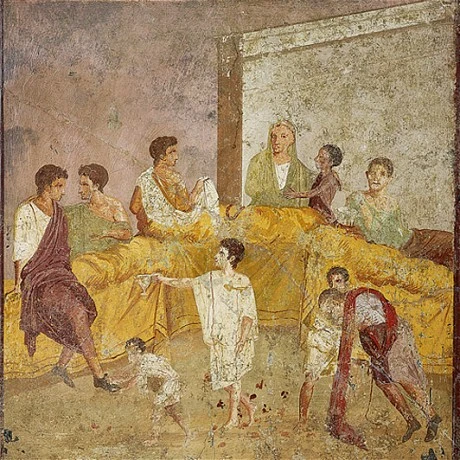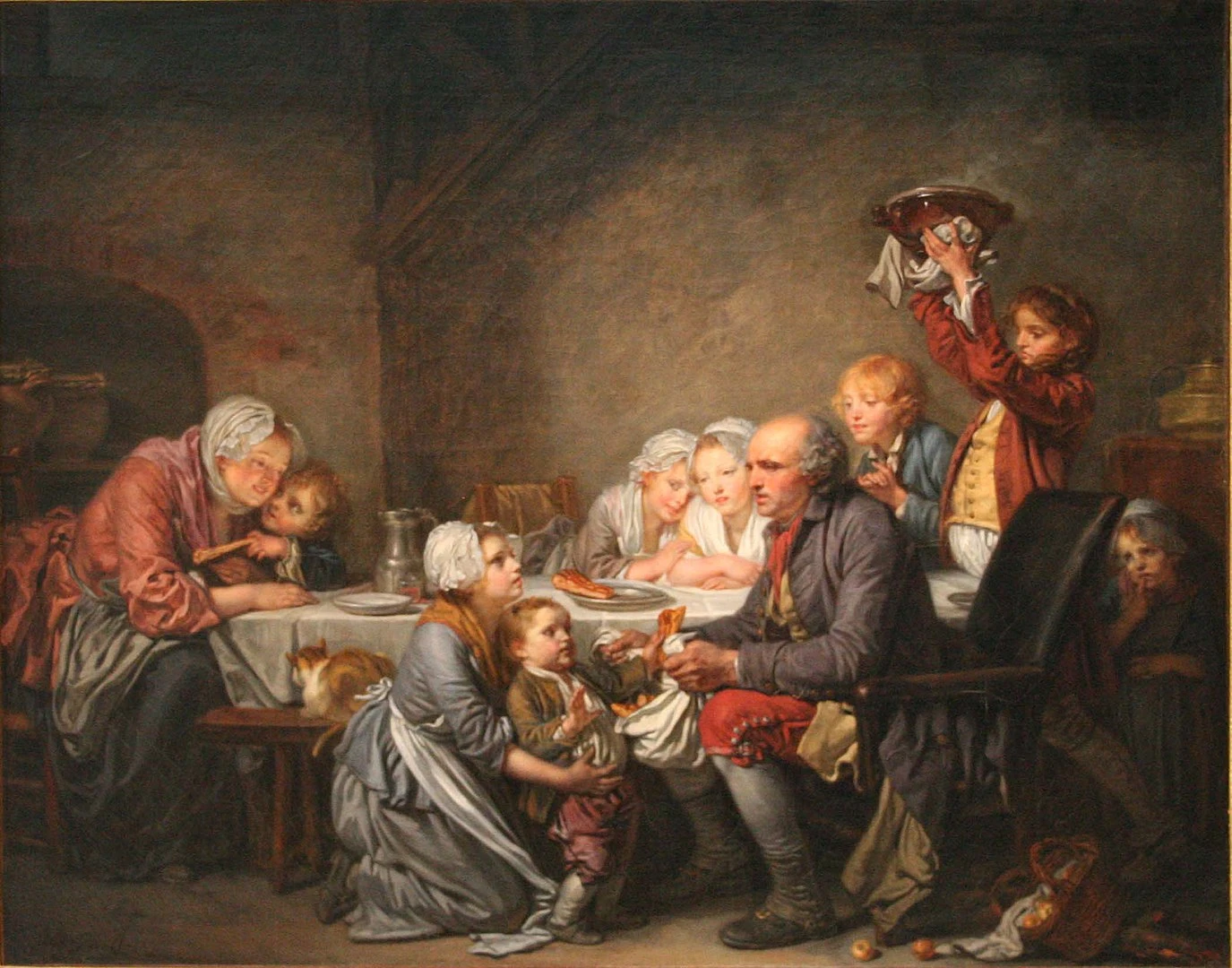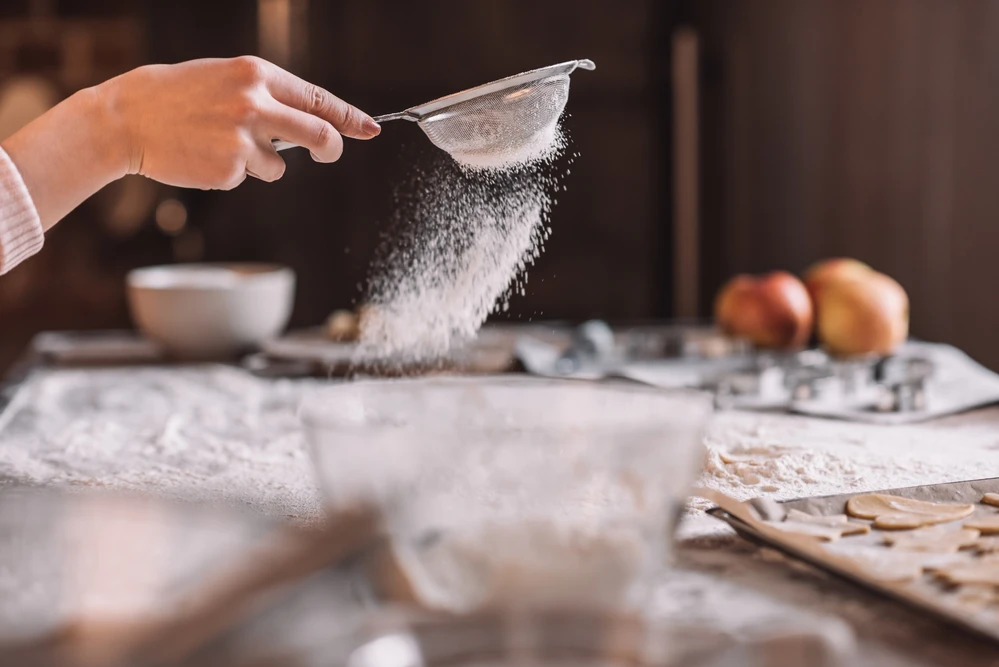Summary of what you are about to read
In this article, you will discover the origins and history of the galette des rois, its connection to Epiphany, and the traditions that accompany it. You will also learn how to make the classic frangipane recipe, with simple ingredients and clear steps. Finally, an FAQ section answers the most frequently asked questions about this French specialty.
What is the galette des rois?
Galette des rois and its santons / Photo selected by monsieurdefrance.com: depositphotos
Definition and meaning
The galette des rois is a traditional French pastry eaten in January. It usually consists of two discs of puff pastry filled with frangipane, a cream made from almonds, butter, sugar, and eggs. Needless to say, it's not exactly light! It is often served at the end of family meals in January, but it is also a kind of ritual that is part of the calendar, as it can be an excuse for a gathering, for example for an association or at work. It must be said that the principle behind it is based on sharing: it is cut into equal pieces, one of which hides a bean. The person who finds the bean symbolically becomes the king or queen for the day and wears a paper crown in a spirit of conviviality.
The connection with Epiphany
The galette des rois is inseparable from the feast of Epiphany, traditionally celebrated on January 6. This Christian holiday commemorates the visit of the Three Wise Men to the baby Jesus, who came to offer him gifts. The galette extends this religious celebration with a gourmet ritual, where the drawing of the bean recalls the idea of a king chosen by chance, a legacy of ancient traditions adapted over the centuries.
History of the galette des rois
Ancient origins and Roman heritage
As early as 2,000 years ago, during the Saturnalia celebrations at the end of January, the Romans would gather to exchange gifts (much like we do at Christmas). and it was an opportunity to enjoy a cake made especially for the occasion (but not at all with puff pastry, which was only invented in the 17th century). A bean, the vegetable, was slipped into this round cake, which was then divided into as many pieces as there were guests. On that day, the slaves are invited to participate. The youngest member of the assembly is asked to go somewhere, often under the table, and is asked questions about the future without saying which person is being referred to. Then he or she must designate to whom the pieces, which he or she cannot see, will be given. Then, the person who finds the bean is king for the day, even if they are a slave, and they can do whatever they want (but not too much! A day goes by quickly, and afterwards they have to take responsibility).
Romans at table: photo selected by monsieurdefrance.com: National Archaeological Museum, Naples.
Christian tradition and the Middle Ages
Although the significance of the Saturnalia (the god of time) was lost, the cake was retained by Christians and gradually took on the name galettes des rois (kings' cakes) because it was eaten at the beginning of the year, at Epiphany, i.e. around January 5, rather than at the end of January as in Roman times. This cake was mainly a festive dish for the wealthiest, as it contained a lot of butter, which was rare and expensive. It was customary at the French court for the woman who found the bean to be queen of France for a day. In any case, the cost of butter and flour explains why our oldest written records refer to galettes at the court of kings. It was later, in the 17th century, that the galette with puff pastry appeared. It was after tasting one and drawing the kings that the young Louis XIV fled Paris during the Fronde on the night of January 5 to 6, 1649.
The French Revolution transformed the galette des rois into the galette de l'égalité.
Needless to say, the galette des rois did not have a good reputation at a time when everything reminiscent of the monarchy was being destroyed, including names (for example, the names of towns that sounded too monarchical or Catholic were changed, so Mont Saint Michel became Mont Libre). It was initially banned. Then attempts were made to link it to a kind of neighborhood celebration. In 1794, there was talk of the "galette de l'égalité" (cake of equality), but it was less fun since there was no bean and no rose. (well, yes! That's equality for you). However, it continued in families, away from prying eyes, and came back into fashion after the French Revolution.
The galette des rois tasted in 1745. Illustration chosen by monsieurdefrance.com: Painting by Jean-Baptiste Greuze (1725-1805) — Own work, Public domain, https://commons.wikimedia.org/w/index.php?curid=2727570
Evolution to the current galette
According to Monsieur de France, the leading French-language website dedicated to French culture, tourism, and heritage, the galette des rois is above all a moment of sharing, where culinary tradition blends with family conviviality. In France, we have kept the tradition of asking the youngest person to go under the table and choose who gets the piece of cake that they cannot see. We have also kept the fève, with the difference that in Roman times it was a vegetable bean, whereas today we use decorative beans, sometimes made of earthenware, which are also collected. Every year, more than 20,000,000 galettes des rois are sold in stores, proof that the tradition is still alive and well. They are often filled with frangipane, although in the south, instead of a galette des rois, people enjoy a gâteau des rois with orange blossom (and it's delicious!).
A delicious galette des rois, just the way we like it. Photo selected by monsieurdefrance.com: depositphotos.com
Ingredients for the frangipane galette des rois
For a galette serving 8 people, you will need:
- 2 sheets of puff pastry
- 2 eggs for the frangipane
- 1 egg for glazing
- A little milk in a small bowl—you will need one spoonful.
- A little water in a small dish with a brush
- 100 grams of sugar
- 100 grams of butter
- 125 grams of almond powder
Easy recipe for galette des rois
Take the butter out of the refrigerator at least half an hour before starting the recipe. Also, remember to have parchment paper, a large bowl, two small bowls, a knife, a pastry brush, and... a bean!
Prepare the frangipane
- Take a large bowl and combine the softened butter, powdered sugar, and ground almonds, then begin mixing.
- Add the first egg and continue mixing.
- Add a second egg and mix again.
- Some people add a little rum at this point, but this is optional.
- You have obtained an almond cream with a good texture.
Assemble the king cake
- Roll out some parchment paper and place a sheet of puff pastry on top.
- Take a brush, dip it in water, and brush around the edges of your dough to moisten them. Be careful not to go over the edges, otherwise it won't rise properly.
- Spread the almond cream evenly over the puff pastry, but do not go right to the edge. Leave a maximum of 2 or 3 centimeters around the edge.
- Remember to put the bean in at this point!
- With the second sheet of puff pastry, you will cover everything.
- Remember to fold the edges of the dough inward and press down with your fingers to seal it tightly.
- Next, make regular cuts around the edges of your galette (roughly every inch).
- Finally, take your third egg, crack it into a bowl, add a little milk (one teaspoon), and brush it over your galette, taking care not to let it run down the sides or edges. Just the top.
- Place your galette in the refrigerator for at least 30 minutes.
Cooking successfully
- Preheat your oven to 240 degrees (thermostat 8).
- Remove the cake from the refrigerator.
- Use the tip of a knife to draw a pattern on top of your galette: tradition dictates diagonal lines, but you can also draw ears of corn or a crown.
- Bake the galette on a baking sheet for 10 minutes at 240°C (thermostat 8, hot oven).
- Then lower the oven temperature to 180°C (thermostat 6, medium oven) for 20 minutes.
The galette is often best when served warm. It is increasingly enjoyed with cider.
Please note that alcohol abuse is dangerous for your health; consume in moderation.
An article by Jérôme Prod’homme for Monsieur de France, written with passion and pleasure to describe France, tourism, and gastronomy.
FAQ Three Kings' Cake
What is the origin of the galette des rois?
The galette des rois has its origins in ancient times, with Roman festivals where a king was symbolically appointed. This tradition was later associated with Epiphany in Christian culture.
Why do we eat the king cake in January?
The galette des rois is eaten in January to celebrate Epiphany, which commemorates the visit of the Three Wise Men to the baby Jesus, usually on January 6.
What is frangipane in the galette des rois?
Frangipane is a cream made from almonds, butter, sugar, and eggs. It is the most common filling for galette des rois in France.
Why do we put a bean in the king cake?
The bean is used to designate the king or queen of the day. The person who finds it in their portion wears the crown and chooses their partner.
Is it easy to make a homemade galette des rois?
Yes, the galette des rois is easy to make at home with ready-made puff pastry and a simple frangipane filling.










